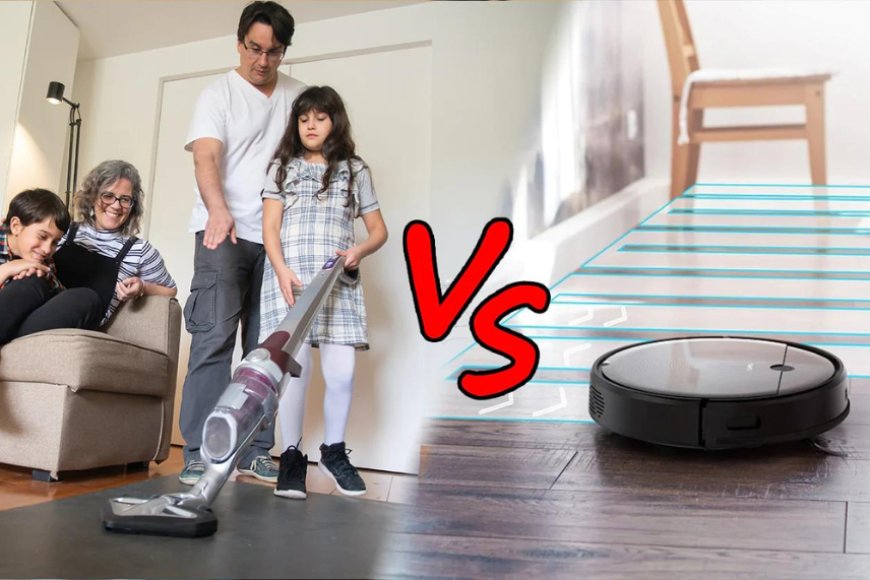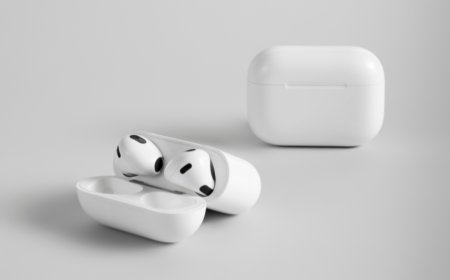Robotic vs. Traditional Vacuums: Which Cleans Better?
Looking for the best vacuum cleaner? Our website has got you covered! Explore the pros and cons of robotic and traditional vacuums to make an informed decision.

Table of Contents:
1. Introduction
2. Understanding Robotic Vacuums
3. How effective are robotic vacuums?
4. Understanding Traditional Vacuums
5. How Effective Are Traditional Vacuums?
6. Robotic Vacuums: Pros and Cons
7. Traditional Vacuums: Pros and Cons
8. Which is better, robots or traditional vacuums?
9. Conclusion
1. Introduction
In today's evolving landscape of home appliances, the advent of robotic vacuums has captured the imagination of households seeking automated cleaning solutions. These futuristic devices are increasingly becoming an integral part of modern homes, offering a blend of convenience and technology that traditional vacuums struggle to match. Amidst this ongoing transformation in the cleaning sphere, it becomes imperative to unravel the intricacies of both robotic and traditional vacuums, understanding their technologies, performances, and the pros and cons they bring to the table.
2. Understanding Robotic Vacuums
The Rise of Robotic Vacuum Technologies:
Robotic vacuums operate on a sophisticated blend of technologies, where sensors and navigation systems are the linchpins, enabling these devices to autonomously maneuver across spaces. These devices have evolved beyond mere gadgets, employing cutting-edge AI algorithms and sensors that allow them to detect and avoid obstacles, map rooms, and even communicate with smart home ecosystems.
Sensors and Navigation Systems
The key to a robot vacuum's autonomy lies in its intricate sensor systems. Using a combination of infrared sensors, lasers, and cameras, these devices adeptly perceive their surroundings, identifying furniture, stairs, and various obstacles to navigate around them efficiently. Advanced systems even adapt in real-time, learning and improving their cleaning paths over time.
Mapping and Room Recognition
Robotic vacuums employ mapping technology to understand the layout of a space, creating accurate room maps for systematic cleaning. By recognizing rooms and their boundaries, they can navigate and clean with precision, ensuring thorough coverage and minimal oversight.
Cleaning Mechanisms: Brushes and Suction
Brushes and suction mechanisms in robotic vacuums are pivotal for effective cleaning. Various brush designs cater to different surfaces, ensuring debris and dirt are efficiently collected, while powerful suction systems pull in and retain the debris within the device.
Connectivity and Smart Features
The connectivity of robotic vacuums with smart home systems or smartphone apps allows for remote control and scheduling of cleaning sessions. These smart features add an extra layer of convenience, enabling users to monitor and control the device even when away from home.
3. How effective are robotic vacuums?
Robotic vacuums excel at daily maintenance, particularly on hard floors and low-pile carpets. Their adaptability across surfaces and efficient edge and corner cleaning make them a reliable choice for routine cleaning tasks. However, challenges persist in handling pet hair and deep cleaning of high-pile carpets.
Limitations of Robotic Vacuums
While these devices offer significant convenience, their limitations include battery life and the need for frequent recharging. Moreover, regular maintenance, including filter replacements and brush cleaning, is necessary for optimal performance.
4. Understanding Traditional Vacuums
In contrast to their robotic counterparts, traditional vacuums have been the longstanding workhorses in the cleaning domain, utilizing more conventional yet effective mechanisms.
Explaining Traditional Vacuum Technologies
Traditional vacuums harness powerful motors and reliable suction systems, often offering a range of attachments and accessories for diversified cleaning requirements.
Bagged vs Bagless
One fundamental divergence lies in bagged or bagless systems. Bagged vacuums store debris in replaceable bags, offering hygienic disposal, whereas bagless versions collect dirt in a bin, necessitating periodic emptying.
Motor and Suction Power
The performance of traditional vacuums heavily relies on the motor's power and the effectiveness of the suction system. Higher power translates to better dirt extraction, especially on carpets and upholstery.
Filtration Systems
Filtration systems in traditional vacuums vary, with some models incorporating HEPA filters for improved air quality by trapping allergens and dust particles.
Attachments and Accessories
The versatility of traditional vacuums lies in their array of attachments, catering to specific cleaning needs such as crevice tools, brushes, and upholstery nozzles.
5. How Effective Are Traditional Vacuums?
Traditional vacuums are renowned for their robust cleaning performances, excelling across various surfaces from hardwood floors to plush carpets. Their adaptability and powerful suction make them adept at thorough cleaning.
Limitations of Traditional Vacuums
Nevertheless, traditional vacuums do pose drawbacks, notably in terms of their weight, maneuverability, and the space required for storage. Additionally, the noise levels and energy consumption can be relatively higher compared to their robotic counterparts.
6. Robotic Vacuums: Pros and Cons
The Pros of Robotic Vacuums:
Convenience and Time-Saving: The autonomous nature of robotic vacuums frees users from manual operation, allowing multitasking or relaxation.
Automation and Smart Features: Integration with smart home systems and scheduling capabilities enhance their usability.
Quiet Operation: Robotic vacuums operate discreetly, making them suitable for use even when individuals are present.
The Cons of Robotic Vacuums:
Limited Cleaning Power: While suitable for regular maintenance, they might struggle with deeply embedded dirt or high-pile carpets.
Price and Initial Investment: Robotic vacuums often require a significant initial investment, potentially deterring budget-conscious consumers.
Dependency on Technology: Malfunctions or dependence on consistent connectivity can hinder their efficiency.
7. Traditional Vacuums: Pros and Cons
The Pros of Traditional Vacuums:
Robust Cleaning Performance: Traditional vacuums offer powerful suction, suitable for heavy-duty cleaning tasks.
Versatility and Customization: A wide range of attachments and adjustable settings cater to diverse cleaning requirements.
Cost Efficiency: They often come at a lower initial cost compared to high-end robotic vacuums.
The Cons of Traditional Vacuums:
Manual Operation and Time Consumption: The need for manual control and maneuvering can be time-consuming.
Storage Space and Maintenance: Their bulkiness demands more storage space, and regular maintenance is necessary for optimal performance.
Noise and Bulkiness: The noise levels and the sheer size can be inconveniences in some living environments.
8. Which is better, robots or traditional vacuums?
In assessing the ideal choice between robotic and traditional vacuums, a comparative analysis is essential, considering various facets like cleaning efficiency, user lifestyle, and cost-benefit analyses.
Comparative Analysis
The cleaning efficiency of both types varies depending on the specific requirements. Robotic vacuums excel at regular maintenance, while traditional vacuums offer robust cleaning on various surfaces.
Lifestyle and User Preferences
Individual lifestyles and preferences play a pivotal role. Those seeking convenience and automated routines might favor robotic vacuums, while users valuing powerful suction and customization might lean toward traditional models.
Cost-Benefit Analysis
The cost factor, including the initial investment and maintenance expenses, needs careful consideration when choosing a suitable vacuum cleaner.
Final Considerations
Highlighting Ideal Situations for Each Type:
Robotic vacuums shine in homes requiring regular light cleaning, especially in smaller spaces, while traditional vacuums stand out for their powerful cleaning abilities, ideal for larger areas, and thorough cleaning sessions.
Emphasizing the Best Fit for Different Users:
The best fit ultimately depends on the user's priorities, where those valuing convenience might opt for robotic vacuums, and users focusing on deep cleaning might prefer traditional models.
9. Conclusion
In summary, the choice between robotic and traditional vacuums involves a multitude of factors, from cleaning efficiency to individual preferences. Readers are encouraged to evaluate their needs and preferences meticulously before selecting the vacuum best suited to their home and lifestyle.
As the landscape of household technology continues to evolve, the decision between robotic and traditional vacuums remains a critical one, shaping the efficiency and convenience of our everyday cleaning routines.
What's Your Reaction?










































































